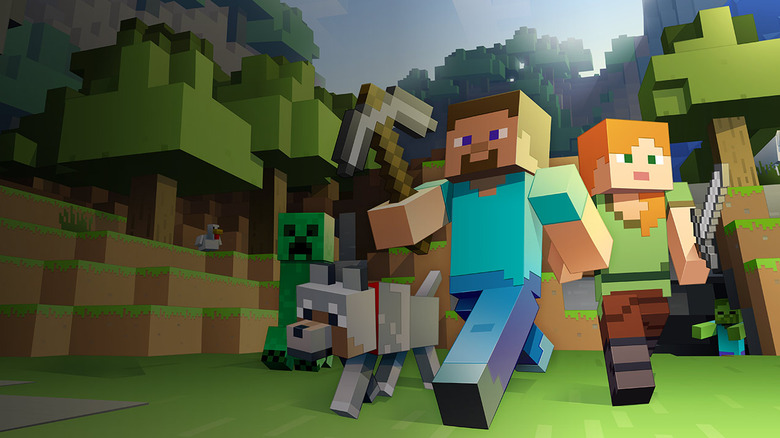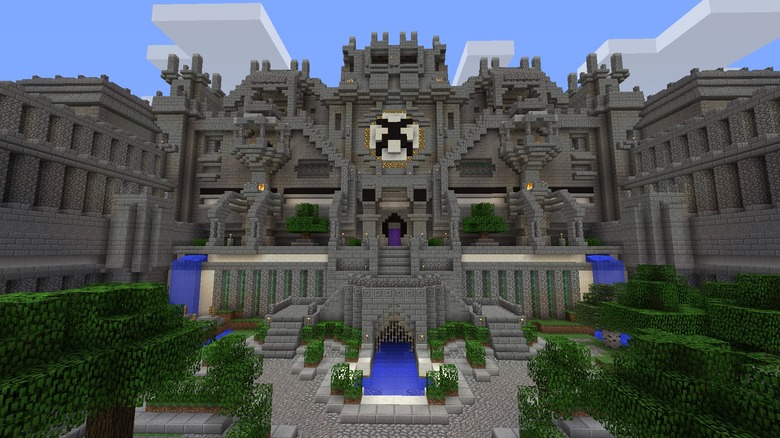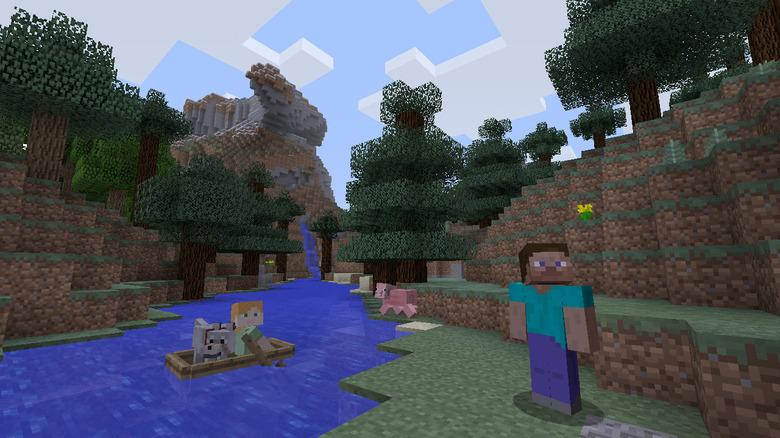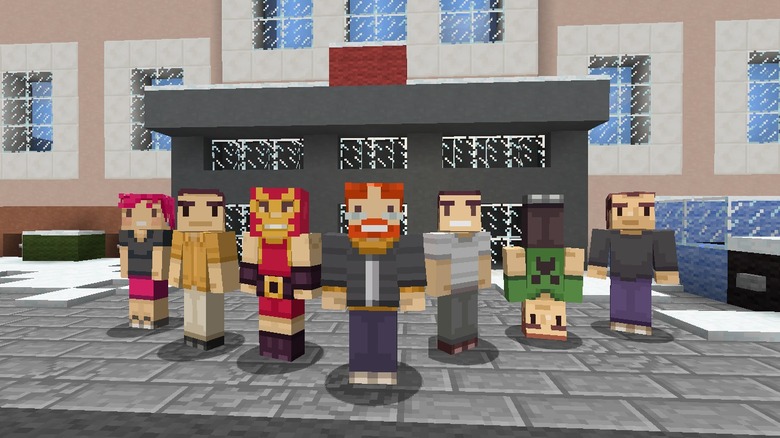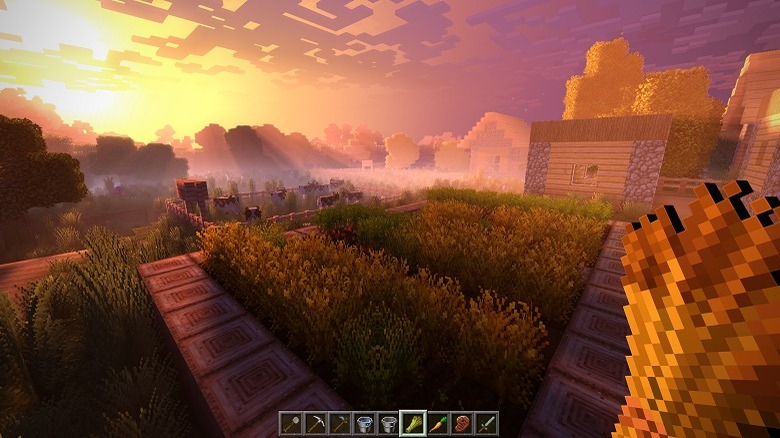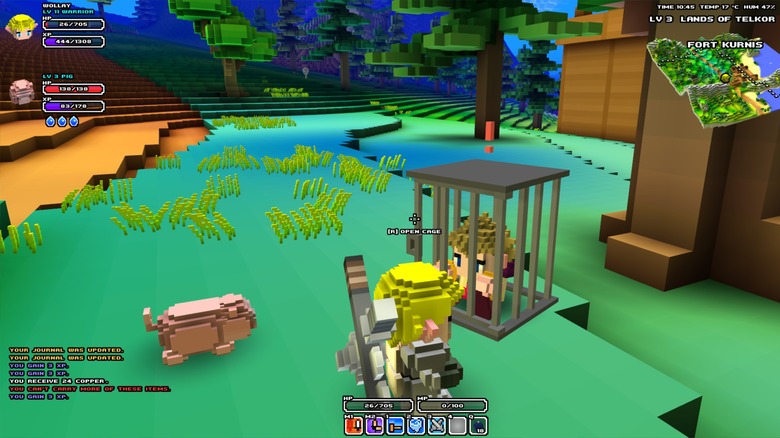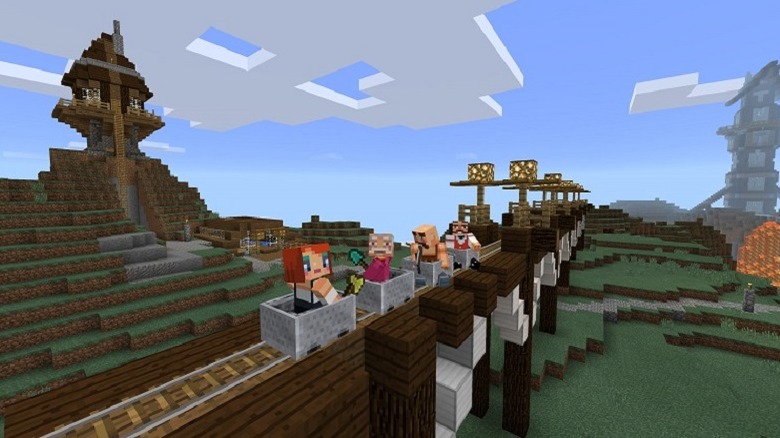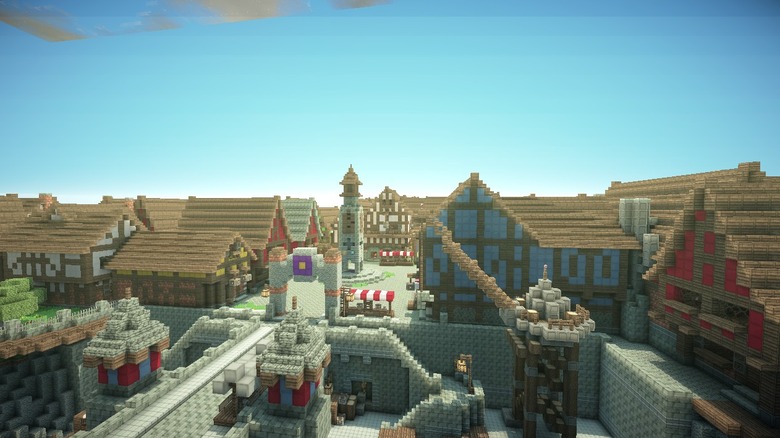What Other Games Can Learn From Minecraft
It's hard to see past Fortnite when talking about uber-popular video games these days, but one only has to go back a few years to find the last game that exploded the way Epic's shooter has. It's a game that started as a small project by a passionate yet somewhat controversial developer. But it soon became a whopper of a title, growing beyond leaps and bounds to the point that it was eventually purchased by one of the largest companies in the world: Microsoft.
That game is Minecraft, a survival-crafting game that still remains popular to this day among children and teens. And its success has taught the game industry a lot of lessons.
Below, we'll detail some of the ways Minecraft turned the video game world on its ear, and how it continues to influence what games do to this day. And we'll tell you why other games need to sit up and take notice at what Minecraft has done and what it's doing.
Here's what other games can learn from Minecraft.
'First party' doesn't have to mean 'exclusive'
When Microsoft acquired Minecraft developer Mojang in 2014, the game was already available on a variety of platforms. But in most scenarios, you might expect that a platform holder like Microsoft would slowly phase out support for consoles and devices it didn't own. That, perhaps, Minecraft would shift over time to become a Windows-and-Xbox-only product, and that fans of the game on Nintendo consoles, Sony consoles, and mobile devices would eventually have to bite the bullet and buy Microsoft.
Except that's not what happened at all. Microsoft kept Minecraft parity across all platforms and devices. And when new consoles launched later down the line, like the Nintendo Switch, Microsoft released Minecraft on those, too.
The cross-platform support Minecraft enjoys, even though it's a Microsoft property, can serve as a lesson to other platforms with their own exclusive titles. Minecraft is a phenomenon thanks in large part to its ubiquity. You can play it just about anywhere, and your progress will usually follow you (the PlayStation port is an exception to this rule). It's helped Minecraft grow and draw in brand-new fans. And those fans can't stop playing.
If first parties truly feel like they have a monster of a game on their hands, spreading the love to other platforms might not be such a bad idea.
People want cross-play and cross-progression
At their core, video games want to be free. In no place is this more obvious than on PC, where the hardware you play on doesn't close you off from the larger community. Your Alienware laptop running a multiplayer game can connect to the same server used by someone on their own custom-built rig. And no one's dared to challenge that precedent. That's just the way it is. But that's not always been the case on consoles. For a long time, if you bought a certain system, you were locked into a sort of gated community. And if your friends bought a different console, you couldn't play together.
But the times are changing. And games need to come along for the ride.
Microsoft and Nintendo have been extremely open-minded about cross-play and cross-progression this generation, and Sony is starting to catch up. Minecraft has helped lead the charge on that front, enabling you to experience the game across multiple platforms. And many of those Minecraft versions can interact with each other, whether it be through multiplayer or synced save data.
This approach has been highly successful for Minecraft. And it's sent a clear message: every game that's able should support cross-play and cross-progression. No questions asked.
You can keep a game alive forever by helping players create
You wouldn't know it with the way the game's changed over time, but there is actually an objective in Minecraft. You craft yourself a safe space and try to survive the night and the Creepers who lurk throughout the world. But Minecraft did something rather incredible that made it famous worldwide for an entirely different reason. And that reason is a big part of why Minecraft remains popular to this day.
The developers of Minecraft gave players the ability to craft as they pleased. They provided an impressive set of creation tools and said, "Go wild." And they did.
Minecraft's Creative Mode is a treasure chest for the imaginative that's just waiting to be opened. Want to build a theme park full of crazy roller coasters? You can do it. Want to build a full-scale replica of the Vatican with nothing but blocks? You can do that, too. The almost limitless nature of Minecraft's Creative Mode means that the game can continue to live on as the community creates more custom content. And it serves as a reminder to developers that, sometimes, they don't have to do all the heavy lifting. If players are passionate enough about your game, they'll create new experiences all on their own.
A fresh art direction can set your game apart
It's an understatement to say that Minecraft doesn't look like any other game. It certainly doesn't the first time you launch in. But the distinct style really grabs hold of you when you see a recreation of a real-world castle that someone's put together. You can see the similarity. Yet there's something truly unique and special about the way the castle's been constructed.
Much of Minecraft's charm comes from its voxel art style. Everything in the game world is blocks — yet somehow, Minecraft pulls it off.
Because Minecraft is a building game at heart, the use of blocks works. It sort of encourages building by taking all of the fuss out of the process. You don't need to do any 3D modeling. You don't need to concern yourself with polygons in the slightest. If you can stack LEGOs in the real world, you can construct something inside Minecraft. Yet there's something spectacular about seeing a grand construction project inside the game come to a finish.
Not every game needs to embrace building like Minecraft does. But they can all experiment with out-of-the-ordinary art styles. If nothing else, it'll make them more memorable. And who knows what it'll inspire both inside and outside of the game.
If your game is refined and the hook is solid, you can outlast any clones
You know that old saying about the only things you can count on in life are death and taxes? Clearly the originator of that quote wasn't around for video games. Because they'd know that there are some guarantees in that space, too. And one of them is this: if a game is popular, you can be sure that other games will copy it.
Long story short: Minecraft has a lot of copycats out there.
Not every game can keep those copycats at bay. PlayerUnknown's Battlegrounds, for instance, released to an audience ravenous for that type of game. Yet when Fortnite: Battle Royale came into the world, it didn't take long for it to usurp PUBG as the battle royale game of choice. The reason Minecraft has stayed on top — even with all the clones it has to contend with — is because it offers the most refined experience, and the hook in Minecraft is so addictive that there's really no reason to leave.
Other games should take note. If your game is the best at its own most distinctive feature and you don't leave room for another to come along and improve on something, everything will be just fine.
You don't always need a sequel
Another one of those "video game guarantees" that you can count on happening — usually, anyway — has to do with sequels. You see, most developers can't help themselves. And most developers like to make money. So when a game launches to a great reception and finds success in the market, you can rest assured that a sequel will happen. A sequel can ride the coattails of the original project. It's low risk. And low risk tends to mean easy money.
So why wouldn't you release a sequel if you have the opportunity? Because sometimes, it can hurt more than it helps.
This is especially true for games like Minecraft that are highly dependent on the community logging on and playing. With a sequel, there exists the possibility that some players will remain with the original game, and others will migrate to the new one. And then you've split your player base, leaving you with a tough decision to make: would you rather support one game or two?
The Minecraft team made that decision already. They have no plans to create a Minecraft 2, and will instead continue adding content to the original. It's a wise move that other companies would do well to pay attention to.
Explore the education potential of your game
We've talked a good bit about the creative tools inside Minecraft and how they've inspired players to go in and build to their heart's content. It's become a favorite pastime with some in the community now, who find a challenge in constructing elaborate mansions, landmarks found in the real world, and locations from their favorite movies and TV shows.
It didn't take long for the education-minded to see the potential for Minecraft in the classroom. And now the rest of the world is starting to catch on.
An article on the website Family Tech highlights this use case for the game clearly, noting that some teachers are using it to "teach math concepts like ratios and proportions," with other classrooms finding value in the way the game brings out the creative side of students and gives them something to work on together in class.
Developers are often surprised to find their game being used in unintended but welcome ways. That's certainly what happened with Minecraft. Rather than wait for that surprise, though, games should lean into discovering ways they can help people learn and grow. There will always be value in that.

